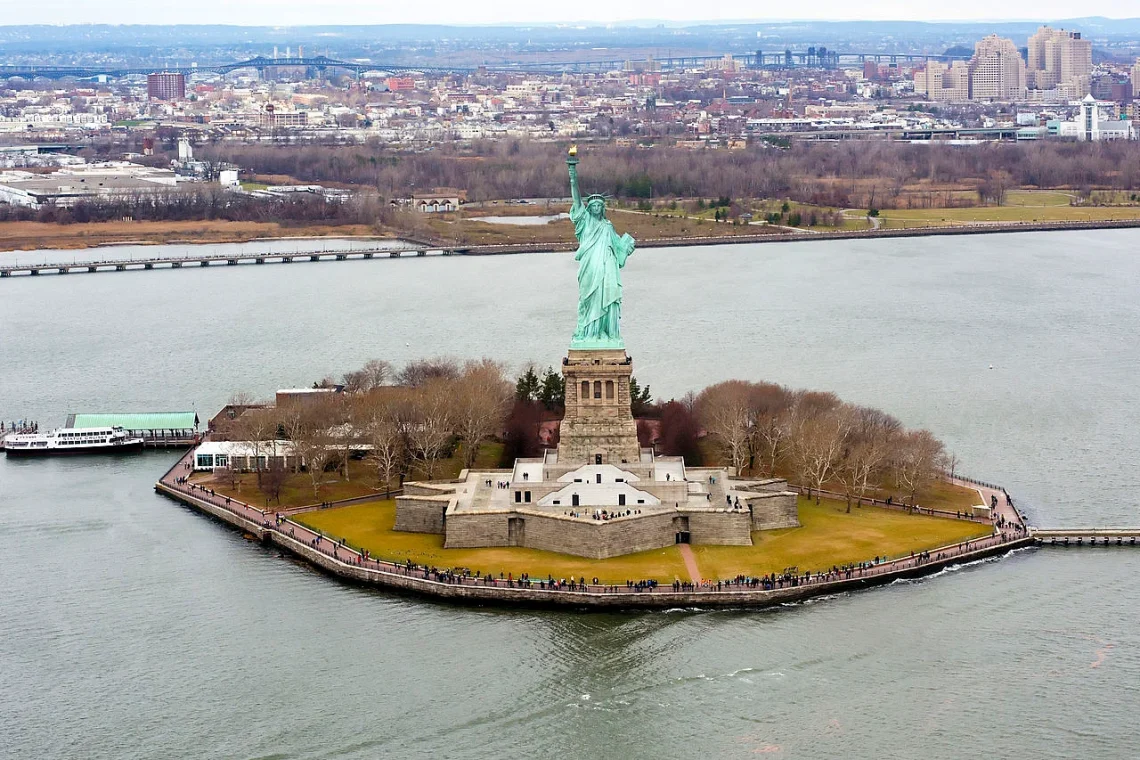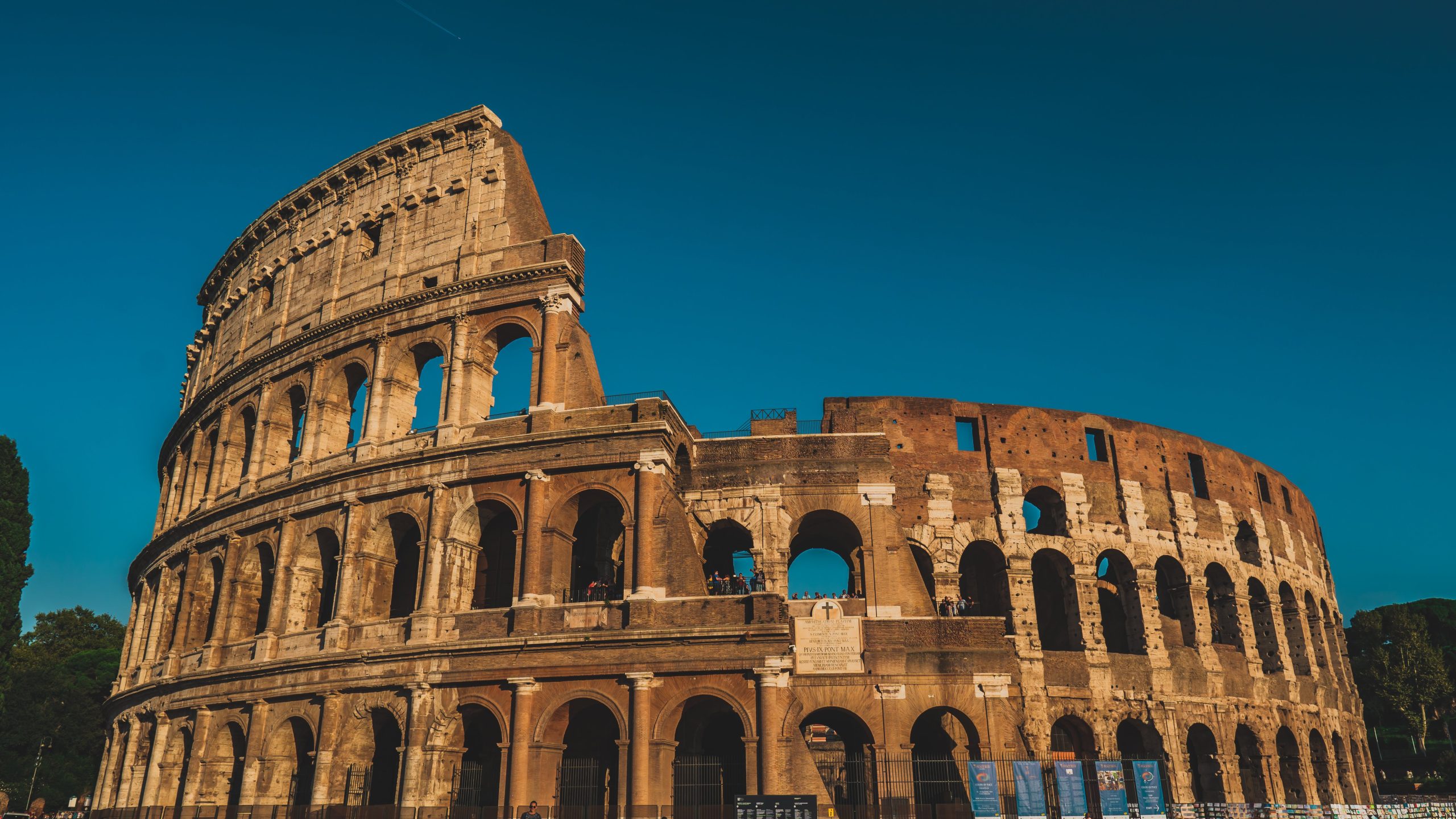The Statue of Liberty (French: La liberté éclairant le monde), is a colossal neoclassical sculpture gifted to the United States by France in 1886. It stands on Liberty Island in New York, welcoming all tourists, including Americans immigrating to the United States and returning from other countries. This copper statue was dedicated on October 28, 1886, on the occasion of the United States Centennial and as a token of France’s friendship with the United States. The interior structure of the sculpture was designed and built by Frédéric Auguste Bartholdi. It is a statue of Libertus, the Roman goddess of liberty. He holds a torch in his right hand and a tabula ansata in his left inscribed JULY IV MDCCLXXVI (July 4, 1776, in Roman letters), the date of the Declaration of Independence of the United States. He breaks the shackles on his feet and moves forward, which is shown as a symbol of the abolition of slavery of the time. Bartholdi was inspired by the French law professor and politician Edouard René de Labloye, who remarked in 1865 that any monument to American independence would properly be a joint project of the French and American peoples. Due to the Franco-Prussian War until 1875, when Labloy proposed that the French build the sculpture and the United States provide the site. Bartholdi completed the head and the torch-carrying hand before the design was fully designed, and these pieces were displayed for publicity at international exhibitions. The hand carrying the torch was displayed in Philadelphia’s Centennial Exposition in 1876 and in Madison Square Park from 1818 to 1882. Raising funds proved difficult, especially for the Americans, and by 1885 the work on the altar was threatened by a lack of funds. Joseph Pulitzer, the publisher of the “New York World”, launched a special campaign for donations to complete the project and attracted more than 120,000 contributors, most of whom did not give more than a dollar. The statue was built in France, shipped abroad in crates and the whole was then consolidated into an island known as Bedlore Island. Construction of the statue culminated in New York’s first ticker-tape parade and a dedication ceremony presided over by President Grover Cleveland. The sculpture was operated by the United States Lighthouse Board until 1901, and then by the War Department. Since 1933, it has been maintained as part of the National Park Service Statue of Liberty National Monument and is a major tourist attraction. Public access to the terrace surrounding the torch has been prohibited since 1916.
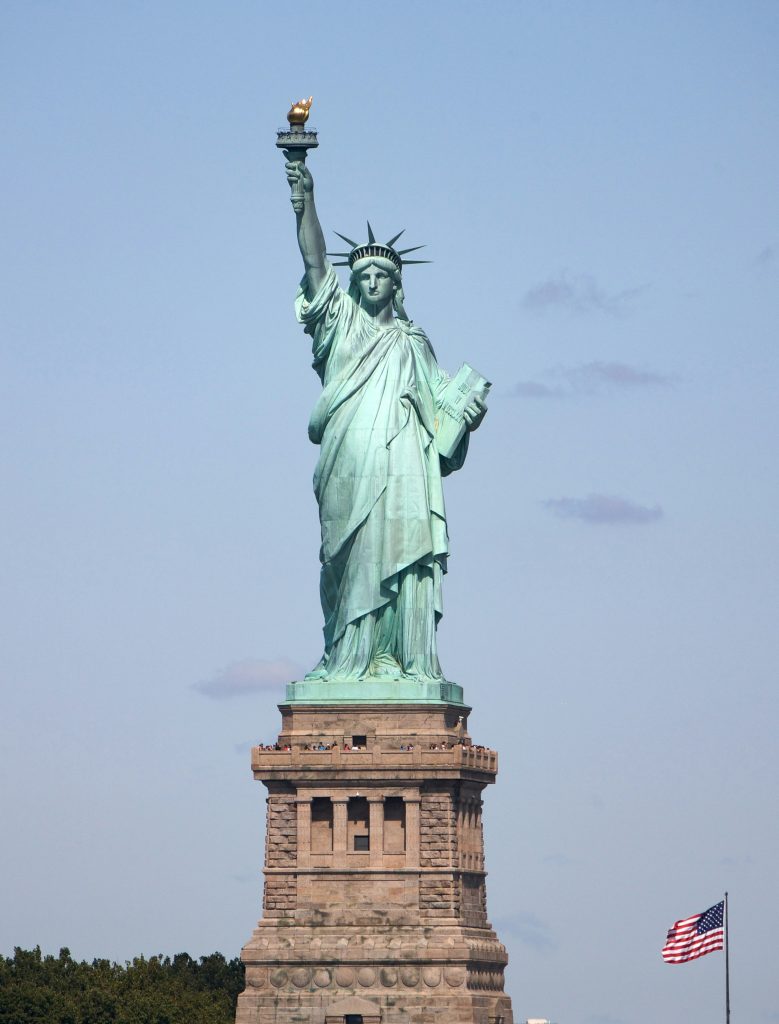
The Beginning of the statue of liberty
According to the National Park Service, the idea of a memorial to the French people presented in the United States was first proposed by Edward René de Labloy, president of the French Anti-Slavery Society and an important political thinker of his time. During a mid-1865 dinner conversation between Laboulieu, a staunch abolitionist, and Frederic Bartholdi, a staunch supporter of the Union in the American Civil War, Laboulieu said: “If a monument to their independence were to rise in the United States, it would only be natural if it were built by a united effort a combined work of both our nations.” In a 2000 report, the National Park Service dismissed it as a legend because they found one of its fundraising pamphlets and said the statue was probably conceived in the 1870s. In another article on their website, the Park Service suggests that “with the end of slavery and the Union victory in the Civil War, Labouillet’s will was meant to honor the Union victory and its consequences in 1865. Freedom and a democratic United States became a reality, and Labouillet honored these achievements. On behalf of France, he proposed to make a gift to the United States of America. Labloye hoped that by focusing on the recent achievements of the United States, the French people would be motivated to call for their own democracy in the face of a repressive monarchy.” According to the sculptor Frédéric Auguste Bartholdi, who later recounted the story, Labloy’s comment was not intended as a proposal, but rather inspired Bartholdi. Due to the nature of Napoleon III’s regime, Bartholdi did not act immediately on the idea except to discuss it with Laboulli. Bartholdi was busy with a potential project; In the late 1860s, he approached Ismail Pasha, the Khadive of Egypt, with plans to build Progress or Egypt Carrying the Light of Asia. A giant lighthouse in the form of an ancient Egyptian female fella or farmer holding a torch at the northern entrance to the Suez Canal. Sketches and models were made for the proposed work, although it was never built. The Suez Proposition had earlier classical precedents, the Colossus of Rhodes: an ancient bronze statue of the Greek sun god, Helios. The statue is believed to have been 100 feet (30 m) high and it likewise stood at the entrance to a harbor and carried a light to guide ships. Khedive and Lesseps rejected Bartholdi’s proposed statue, citing the cost of the failure. A later port-side lighthouse was built in 1869 by Francois Coignet. All major projects were further delayed by the Franco-Prussian War, in which Bartholdi served as a military chief. Napoleon III was captured and expelled from the war. Bartholdi’s home province of Alsace was lost to Prussia and a more liberal republic was established in France. While Bartholdi was planning a trip to the United States, he and LaBoye decided to discuss the idea with influential Americans.In June 1871, Bartholdi crossed the Atlantic, carrying a letter of introduction signed by LaBoye. Arriving in New York Harbor, Bartholdi fixed on Bedlore’s Island (now [Liberty Island]) as the site for the sculpture, surprised that ships arriving in New York had to pass it. He was delighted to learn that the island was owned by the United States—it had been granted by the New York State Legislature in 1800 for the defense of the harbor. It is as he wrote in a letter to Labouly: “All kingdoms equal land.” After meeting with many influential New Yorkers as well, Bartholdi met with the president, Ulysses S. Grant, who assured him that finding a place for the statue would not be difficult. Bartholdi crossed the United States twice by rail, and he met many Americans whom he felt were sympathetic to the project. He and Labloy decided to wait before launching an official campaign. In 1870 Bartholdi produced the first model of his concept. A friend of Bartholdi’s, the American artist John LaFarge, later wrote that Bartholdi made the first sketches for the statue during a trip to America at LaFarge’s Rhode Island studio. Bartholdi continued to develop this idea after returning to France. After the defeat of the Prussians he also worked on a number of sculptures designed to reinforce French patriotism. One of these was the Lion of Belfort, a monumental sculpture carved into the rock below Belfort Castle, which survived the siege of Belfort during the war. At 76 feet in length and half its height, this colossal lion exemplifies the romanticism that Bartholdi later brought to the Statue of Liberty.
Related Topic: UNESCO World Heritage Sites
Design, style, and symbolism
Bartholdi and LaBoule consider what would best convey the idea of American independence. The first two female figures in American history were often used as cultural symbols of the nation. One of these symbols was Columbia, seen as a form of the United States of America in the same way that Britannia was identified with the United Kingdom. Marien came to represent France. Columbia Traditional European American figure another notable female icon in American culture was the representation of Liberty, derived from libertus, widely venerated, especially among freed slaves. The most popular of the time were .[[United States dollar coins | An image of Liberty often appeared on American coins, and representations of Liberty appeared in popular and civic art, Even Thomas Crawford’s “Statue of Liberty” (1863) atop the dome of the United States Capitol Building.
The design features iconography from ancient history, including the Egyptian goddess Isis, the ancient Greek deity of the same name, Roman Columbia, and Christian iconography of the Virgin Mary.
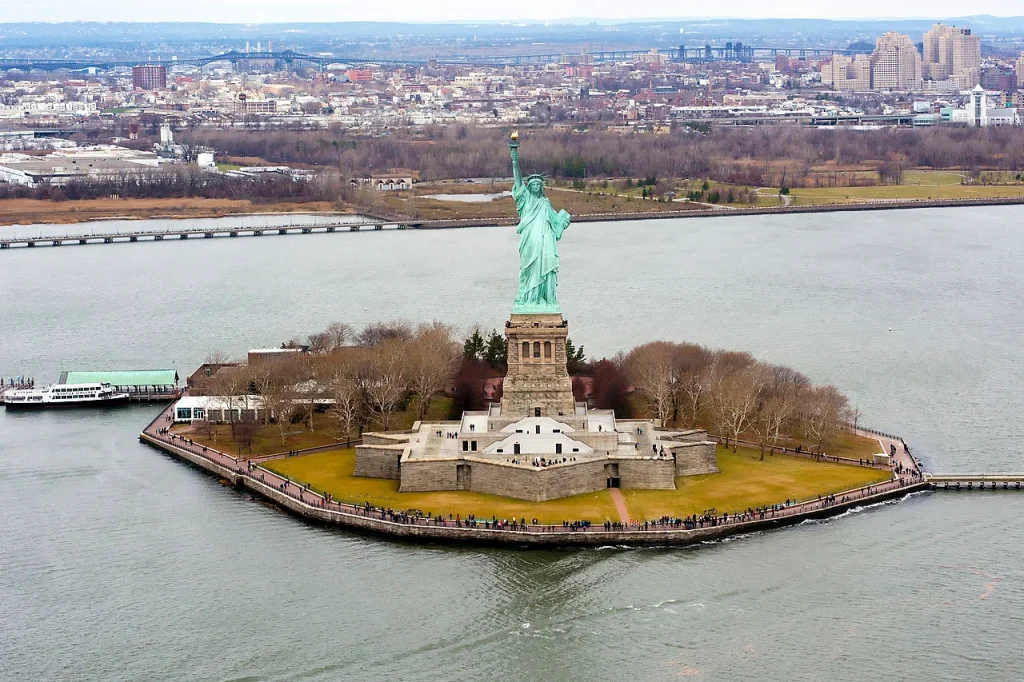
Eighteenth and nineteenth-century artists [[classical republicanism]. continued to attempt to present Libertus as an allegory for the realization of republican ideals. Libertus is depicted on the seal of France. Bartholdi intended to give the statue a peaceful appearance, rather than the impression of violence typical of Delacroix’s work and chose a torch representing progress to hold the figure.
Crawford’s statue was designed in the early 1850s. It was originally a “pilius” crown, a cap given to freed slaves in ancient Rome. United States Secretary of War Jefferson Davis, a Southerner who would later serve as President of the [[Confederate States of the United States]], was concerned that the “Pileus” would be taken as an abolitionist symbol. He advised that it should be changed to a helmet. Delacroix used pileus in his sculptures, so Bartholdi also wanted to use pileus. Later, he used a diadem to top his sculpture. The seven rays of the diadem form a halo or aureole. They represent the sun, the seven seas, the seven continents, and many other things besides, but the burning torch is a different matter, through which Liberty lights the world. Bartholdi’s early models were similar in concept: women in neoclassical style, wearing “stola” and “pella” (gowns and robes, common in depictions of Roman goddesses) and holding a burning torch above. According to popular accounts, the Statue of Liberty was modeled after the face of the sculptor’s mother, Charlotte Beiser Bartholdi, but Regis Huber, curator of the Bartholdi Museum, records that, along with other speculations- By no stretch of the imagination did he design this figure with a strong, intricately crafted silhouette, which would be well placed during his dramatic harbor setting and allow passengers to enter the ship. Bartholdi wrote of his technique: to convey the changing perspective of the statue as it moves toward Manhattan, he gave it a classical framework and applied simplified modeling to reflect the project’s grand scale and its singular purpose: “The surfaces should be broad and simple, defined by a bold and clear design, accentuated in the important places. The enlargement of the details or their multiplicity is to be feared. By exaggerating the forms, in order to render them more clearly visible, or by enriching them with details, we would destroy the proportion of the work. Finally, the model, like the design, should have a summarized character, such as one would give to a rapid sketch. Only it is necessary that this character should be the product of volition and study, and that the artist, concentrating his knowledge, should find the form and the line in its greatest simplicity.” As the project evolved, Bartholdi made changes to the design. Bartholdi considered handing Liberty a broken shackle, but decided it would be too divisive in the days following the Civil War. The upright statue stands on a broken shackle, but is half-hidden by its robes and difficult to see from the ground. He is one in Liberty’s hand to provoke the idea of law Handed over the “Tabula Ansata”, though he was hesitant about what would be in his left hand. He praised the Constitution of the United States, yet he wrote JULY IV MDCCLXXVI on the tablet, thus linking the idea of independence with the country’s Declaration of Independence.
On this project Bartholdi approached his friend and mentor, the architect Eugène Viollet-le-Duc, to take over as chief engineer. Viollet-le-Duc designed a brick within the statue, to anchor the skin. After consultation with metalworking foundry gadgetry, Gauthier & Co., Viollet-le-Duc chose the metal that would be used for the skin, the copper sheets, and the method used to shape it, rebar. In this, the sheets are heated and then struck with a wooden hammer. This is an advantage in volume, as the weight will be less than the volume since the copper only needs to be 0.094 inches (2.4 mm) thick. Bartholdi just decided on the height, twice that of the Italian Sancarlon and the German statues and Arminius.
Announcements and preliminary work
By 1875, France was enjoying improved political stability and a post-recovery economy. The growing interest in Philadelphia’s upcoming centennial prompted LaBoulley to make the decision to seek public support. The statue was named, “Liberty Enlightening the World”, along with its announcement as a fundraiser for the Franco-American Union. Americans are expected to pay for this sculptural altar. The announcement elicited a generally favorable reaction in France, although many French citizens expressed that their Franco-Prussian War was resentful of the United States for not coming to aid in the war with Prussia. French monarchists opposed the statue, simply because it was proposed by the liberal Labouillet, who had recently been elected a senator for life. Labeaulay organized events designed to appeal to the rich and powerful, including a special performance at the Paris Opera on April 25, 1876, featuring a new cantata by composer Charles Gound. The piece was titled “La Liberty Clariant Le Mondi”, the French version of the statue’s declared name.
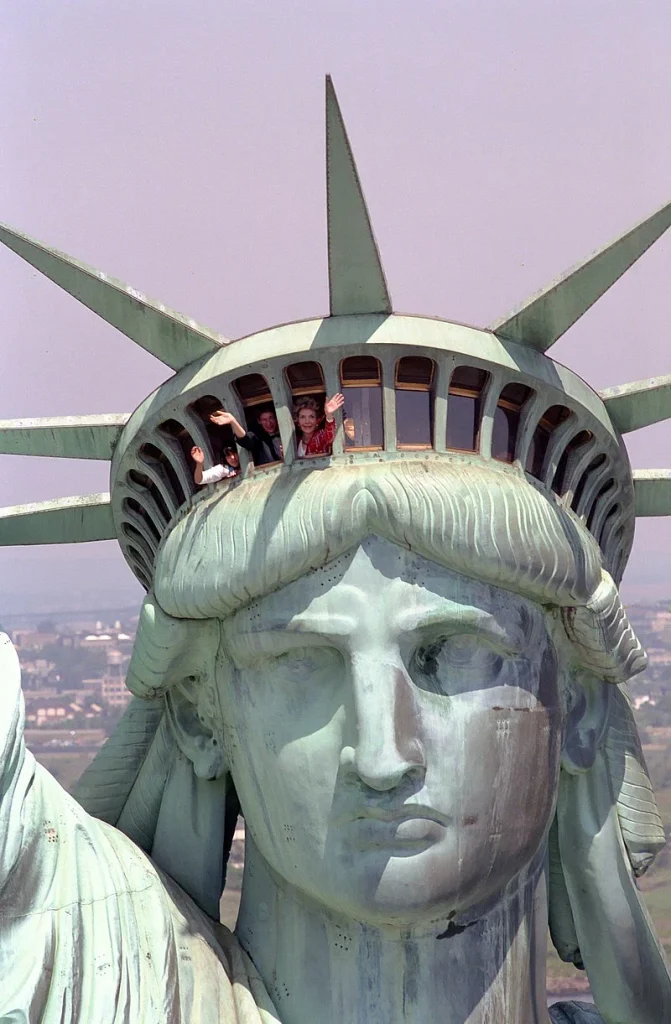
Focused primarily on the elite, the union succeeded in raising funds throughout French society. Schools were funded by ordinary citizens and even French municipalities. Labloy’s political allies supported this call, such as the French-American Alliance in the American Revolutionary War. The French team is also descendants of. Less ideological, contributions came from those who anticipated American support for the Panama Canal effort. The copper comes from multiple sources and some of it is said to come from a mine in Vigens, Norway, although this is not conclusive after testing samples. According to Cara Sutherland in her book The Museum of the City of New York City, 2,00,000 kg Copper was needed and the French copper industrialist Eugène Secretan of copper was donated.
Although plans for the statue were not finalized, Bartholdi went ahead with the head and right arm. Gadget, Gauthier & Co. Work began in the workshop. In May 1876 Bartholdi visited the United States as a member of a French delegation to the Centennial Exhibition and arranged for a large painting of the New York statue as part of the centennial celebrations. The hand did not reach Philadelphia until August; Due to its late arrival, it was not listed in the exhibition catalog and some reports correctly identified the work, while others called it the “Colossal Arm” or the “Bartholdi Electric Light”. The exhibition grounds had several monumental works of art competing for fairgoers’ interest, including an exotic fountain designed by Bartholdi. Nevertheless, the arm proved popular during the final days of the exhibition, and visitors climbed the torch porch to view the arena. It was on display in Madison Square Park for several years before returning to France to join the rest of the statue (the Statue of liberty).
During his second trip to the United States, Bartholdi informed several groups about the project and called for the formation of the American Committee of the Franco-American Union. Committees were formed in New York, Boston, and Philadelphia to raise money for the altar and to pay for the foundation. Eventually, the New York group took over most of the American fundraising and is often referred to as the “American Committee”. One of the members was 19-year-old Theodore Roosevelt, future governor of New York and future president of the United States. On March 3, 1877, after completing his last day in office, President Grant signed a joint resolution authorizing the state to accept the statue through the President and to select a site for it. The next day President Rutherford B. Hayes chose the Bedlore Island site suggested by Bartholdi.
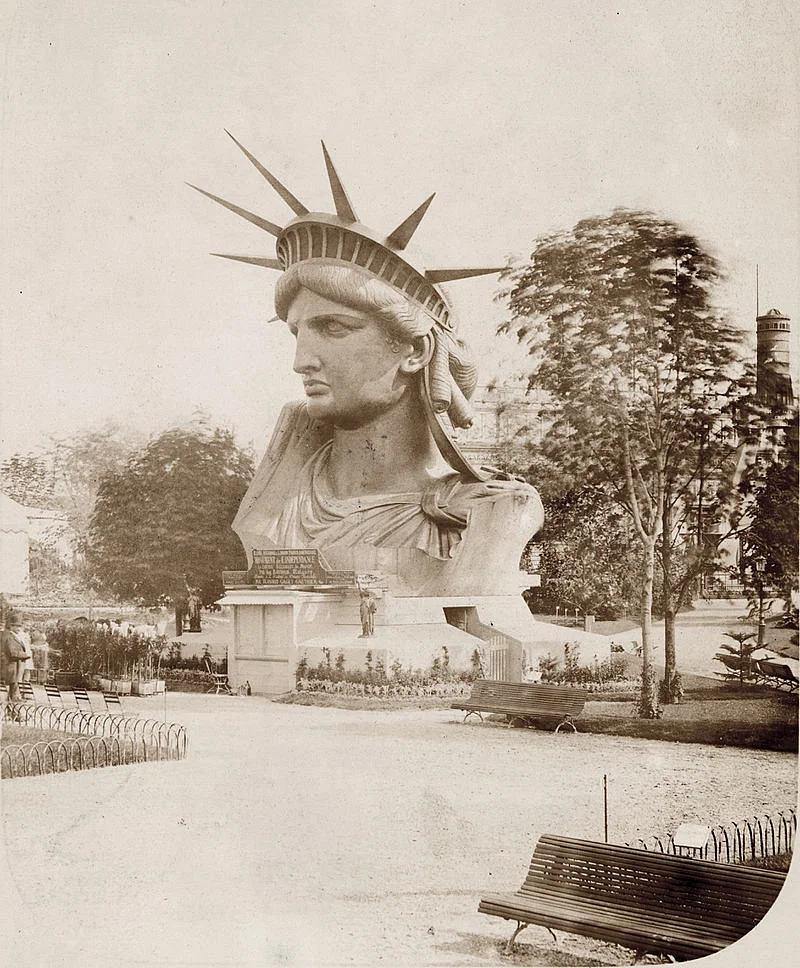
Construction in France
Returning to Paris in 1877, Bartholdi concentrated on finishing the head, which was exhibited at the Paris World Fair. Fundraising continued for the sale of models of the statue. Tickets were also given to watch the construction process at the Gadget, Gauthier & Co. workshops; the French government allowed a lottery; Prizes included valuable silver plates and a terracotta model of the statue (the statue of liberty). By the end of 1879, about 250,000 francs had been raised. Read More
Conclusions
Although known as the Statue of Liberty, the original name of the sculpture is ‘Liberty Enlightening the World’. The sculpture holds a lighted torch in its right hand and a book in its left hand, with the date of the Declaration of Independence of the United States—July 4, 1776—written in gilt Roman letters. The crown of the Statue of Liberty has seven thorns, representing the sun, the seven continents, or the seven seas. The broken chains at its feet symbolize the abolition of slavery in the United States. The height of the main sculpture of the Statue of Liberty is 151 feet. But its height including the altar is 305 feet. The length of the nose of this huge sculpture is 6 feet 6 inches and the distance between its two ears is 10 feet. The copper idol weighs more than two lakh kg. On October 28, 1886, the then-President of the United States, Grover Cleveland, officially inaugurated the sculpture. The United States government declared it a national monument in 1924.
